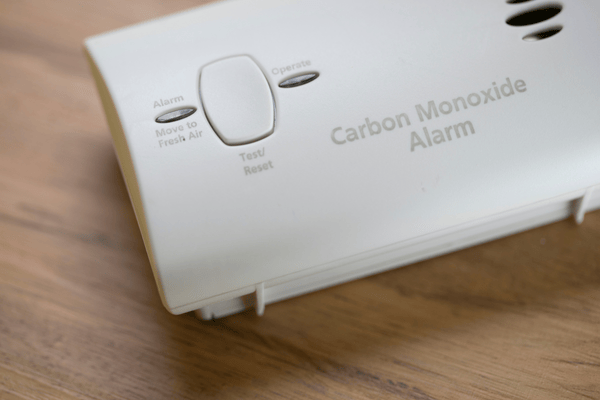How To Detect And Prevent Carbon Monoxide Leaks In Your Home

Carbon monoxide (CO) is an odorless, colorless gas, often referred to as the “invisible danger” or the “silent killer.” It’s a byproduct of burning fuel in common household appliances like furnaces, water heaters, and stoves. When undetected, carbon monoxide leaks can accumulate in your home, posing a deadly risk to you and your loved ones.
The numbers are sobering: according to the CDC, over 50,000 people in the U.S. visit the emergency room each year due to carbon monoxide poisoning, and tragically, approximately 430 deaths are reported annually.
The good news? Carbon monoxide poisoning is entirely preventable with the right knowledge, tools, and proactive measures. This guide will walk you through everything you need to know about detecting and preventing carbon monoxide leaks in your home.
1. Carbon Monoxide 101: What Every Homeowner Should Know
What Is Carbon Monoxide?
Carbon monoxide is a toxic gas that forms when fuels like natural gas, propane, oil, wood, or charcoal are not burned completely. It has no smell, taste, or color, making it undetectable by human senses—this is why it’s so dangerous.
Common Sources of CO in Your Home
- Furnaces and boilers
- Gas stoves and ovens
- Fireplaces and wood stoves
- Clothes dryers
- Portable generators
- Gas-powered water heaters
- Automobile exhaust in attached garages
Understanding these sources is the first step toward preventing carbon monoxide leaks in your home.
2. Know the Symptoms: Recognizing Carbon Monoxide Poisoning
Carbon monoxide poisoning often mimics the symptoms of common illnesses, making it difficult to identify without a carbon monoxide detector. Recognizing the early warning signs is critical to taking swift action.
Common Symptoms of CO Poisoning
- Headaches
- Dizziness or confusion
- Nausea or vomiting
- Fatigue or weakness
- Shortness of breath
Severe exposure can lead to mental confusion, loss of consciousness, or even death. If these symptoms occur—especially if multiple people in the household experience them simultaneously—evacuate immediately and seek fresh air and medical attention.
3. Spot the Red Flags: Signs of Carbon Monoxide Leaks
Carbon monoxide leaks can often be spotted if you know what to look for. Keep an eye out for these common warning signs:
- Yellow or orange flames on gas appliances (flames should always be blue).
- Soot or scorch marks around appliances or vents.
- Heavy condensation on windows near fuel-burning appliances.
- Musty or stuffy odors, even though CO itself is odorless.
Regularly inspecting your home for these indicators can help you catch potential issues before they become life-threatening.
4. Your First Line of Defense: Installing Carbon Monoxide Detectors
Carbon monoxide detectors are essential for protecting your family. Just like smoke detectors, these devices alert you to danger before it becomes a crisis.
Where to Place Carbon Monoxide Detectors
- Install at least one detector on every level of your home.
- Place detectors near sleeping areas to ensure they’ll wake you if CO levels rise at night.
- Position detectors near fuel-burning appliances but not directly next to them to avoid false alarms.
Tips for Maintenance and Testing
- Test detectors monthly to ensure they’re functioning properly.
- Replace batteries regularly (twice a year is ideal).
- Replace detectors every 5–10 years, depending on the manufacturer’s recommendations.
Pro Tip: Consider a combination smoke and CO detector for added convenience and safety.
5. Prevention Is Key: Steps to Avoid Carbon Monoxide Leaks
Taking a proactive approach to carbon monoxide prevention is the best way to keep your home safe. Here are some practical steps to reduce your risk:
Maintain Your Appliances
- Schedule annual professional inspections for furnaces, boilers, and other fuel-burning appliances.
- Clean and inspect chimneys and flues regularly to prevent blockages.
Ensure Proper Ventilation
- Make sure all appliances are properly vented to the outside of your home.
- Avoid using portable gas stoves, grills, or generators indoors—even with windows open.
Be Cautious with Vehicles
- Never leave a vehicle running in a closed garage, even for a few minutes.
- Always open the garage door before starting a car.
Educate Your Household
- Teach everyone in your home about the dangers of carbon monoxide and how to recognize the symptoms.
- Create an emergency plan so everyone knows what to do if a detector alarm goes off.
6. What to Do in an Emergency: Acting Quickly Saves Lives
If your carbon monoxide detector alarms or you suspect a CO leak, take immediate action:
- Evacuate your home. Get everyone, including pets, outside to fresh air.
- Call 911 or your local fire department.
- Do not re-enter the home until professionals confirm it’s safe.
If anyone shows symptoms of CO poisoning, seek medical attention immediately. Quick action can mean the difference between life and death.
7. Long-Term Benefits: Peace of Mind and Protection
Detecting and preventing carbon monoxide leaks doesn’t just save lives—it also provides peace of mind. With regular inspections, properly installed detectors, and a proactive prevention plan, you can feel confident that your home is safe for your family.
Investing in safety measures like CO detectors and routine HVAC maintenance is a small price to pay for the security and well-being of your loved ones.
Make Your Home a Carbon Monoxide-Free Zone
Carbon monoxide is a silent, invisible threat, but it’s one you can combat with knowledge and preparation. At Livinon Mechanical, we’re here to help you protect your family with professional inspections, maintenance, and smart solutions to keep your HVAC system running safely and efficiently.
Take Action Today:
- Check your carbon monoxide detectors to ensure they’re functioning properly.
- Schedule an HVAC inspection with Livinon Mechanical to keep your appliances in top condition.
- Educate your family about the dangers of carbon monoxide and how to stay safe.
Let’s work together to make your home a safe, comfortable space. Contact Livinon Mechanical today for expert advice, professional service, and peace of mind. Schedule your appointment now!
